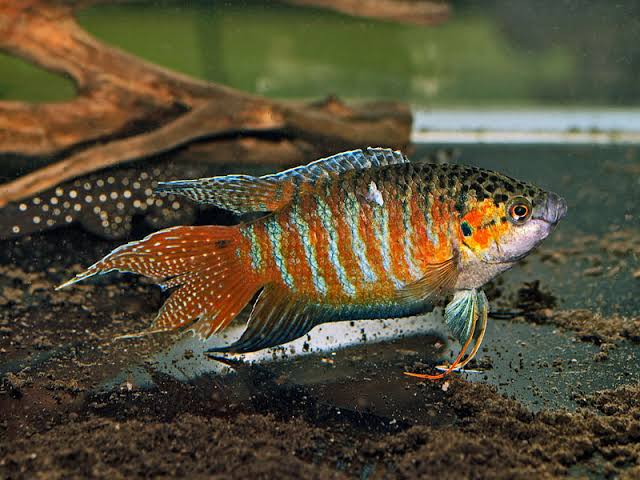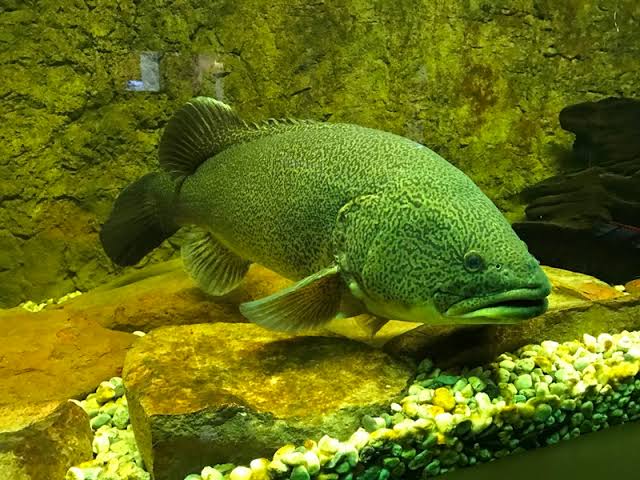Have you ever considered adding a rayfish to your sweet aquarium, but doubts have ended up destroying your plans?
If you have the possibility of having and maintaining an aquarium of optimum dimensions to house these fish, we are going to give you a series of tips to make taking care of your freshwater rays a breeze.
However, you must bear in mind that they require a little more attention than a freshwater aquarium to use, because you need a greater capacity and that the rays do not behave or feed like other freshwater fish. But for it we have made this small guide with characteristics, behavior and feeding of the ray fish.
What is the natural habitat of rayfish? What is the ideal water temperature?
Freshwater rays, also called Potamotrygon motoro, usually inhabit tropical freshwater rivers, where the temperature ranges from 24 to 26 ºC.
The depth at which they are usually found depends on how deep the rivers in which they live in each case. For example, rays have been found at depths of up to 2.5 m in the waters of the Paraná River, but nevertheless in the Uruguay River they live quietly below 7 or 10 m depth.
These ocellated rays prefer calm waters with sandy bottoms; especially the shores of streams, creeks and lakes, where they can be buried under the substrate.
They are a species typical of several hydrographic systems in South America: the Amazon region of Brazil, Uruguay, Paraguay, Orinoco, Rio de la Plata, Rio Pilcomayo, Rio Bermejo, Rio Guapore, Rio Negro, Rio Branco, Rio de Janeiro and Rio Paraguay.
Bearing these data in mind, if we want to take care of a stripe in our aquarium, the water must be kept at a temperature between 23 and 28 ºC, and we must give the water a certain movement simulating a river basin.
The composition of the water is not a particularly important factor, although we must bear in mind that it is soft and with a certain degree of acidity, always free of debris and possible dirt.
What characteristics distinguish freshwater stripes from the rest?
Freshwater rays, (whose scientific name is Potamotrygon motoro), are distinguished from other very similar species, (such as Potamotrygon falkneri), because they have dorsal projections placed opposite each side in a circular shape in which are the eyes, yellowish orange, each of which is surrounded by a black ring larger than the diameter of the eye.
This particular placement of their eyes allows them to have a 360º field of vision. Their pupil is growing, with a dynamic iris capable of enlarging or dwarfing itself according to the conditions of light from the outside.

The body colour, however, takes on a brownish greyish tone, with an oval shape and a strong tail that harbours a poisonous spine. Throughout their body, under the epidermis, they have small channels filled with fluid that allow the animal to feel changes in water pressure or currents around them.
The total length that can reach the stripes of fresh water is up to 1 m, (in conditions of freedom), and the maximum weight of 15 kg, although the cared for in captivity tend to remain much smaller, (reaching 50 or 60 cm and weighing less than 10 kg). Females tend to be larger than males.
How many years can rays live in captivity? Some facts about their development
Ocellated stripes are ovoviviparous, and their eggs can reach approximately 300 mm in diameter during the ovulation period.
In this way, the skate that gestate inside the egg is in turn inside the mother’s uterus and develops inside it, being fed with the nutrient-rich secretions that come from the mother. Most of the body develops symmetrically, although there are parts that may present some asymmetry in its development.
The stage of rapid growth takes place in the first years of life, being slower as the line becomes longer. Normally, a captive-bred freshwater skate can live up to 15 years.
The gestation of the rays Potamotrygon motoro usually takes about 6 months in wild conditions, which are reduced to 3 months in the case of those born in aquarium. The litters can have from 3 to 21 specimens, being always an odd number.
Some data on the reproduction of the Potamotrygon motoro
Studies on the reproduction of this species have been carried out primarily in populations of freshwater rays observed in captivity, and may undergo certain changes with respect to the behavior of those specimens that live in the wild. According to these observations, copulation usually takes place mainly at night.
The male usually attaches himself to the female with the help of his legs, sometimes leaving prominent marks.
This species is polygamous, although the male is usually several weeks with a female before starting the reproduction period with a different female.
The reproductive cycle of the freshwater stripe is strongly influenced by the conditions and hydrological cycle of the environment of the river in which they are found. They usually mate mainly during the dry season, coinciding with the months of June to November.
The gestation period takes place during 3 to 6 months, being the average time of 6 months, and in the rainy season, (during the period from December to March), is when the birth takes place.
Normally a reproductive cycle has been observed in which, during 3 consecutive years a litter is given birth, but the following years a period of reproductive inactivity is produced.


